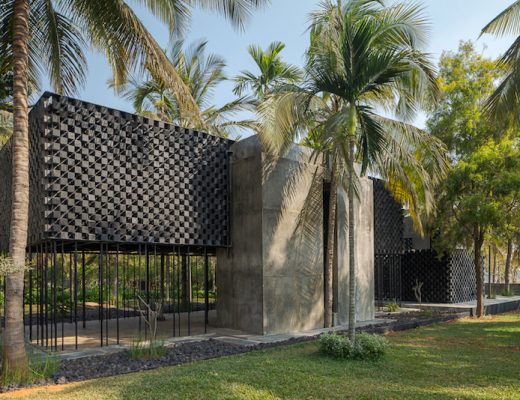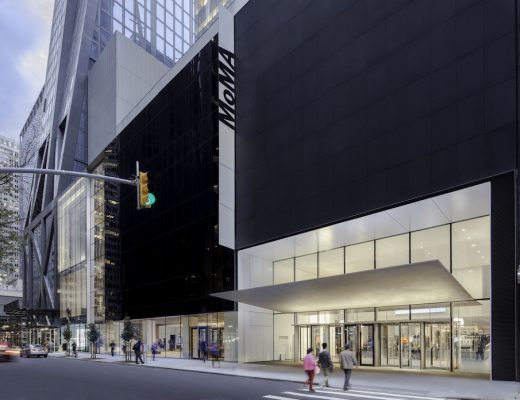To mark Singapore’s 56th birthday, the National Design Centre (NDC) celebrates our local design heroes and their works in its line-up from August to October. Among the ongoing exhibitions at the NDC is Rope Chandelier, an installation designed by Studio Juju in collaboration with graphic designer Theseus Chan, founder and creative director of design studio WORK, who has worked with brands like Comme des Garçons, Hermès and Louis Vuitton.
The installation titled Rope Chandelier, which is on show till 26 September at NDC, seeks to challenge the status quo in a society that often shies away from individualistic expressions and risky ideas. Rope Chandelier celebrates the importance of the process that leads to the undefined domain. It exemplifies the attributes that characterise an unfinished ‘design’ piece; familiar objects are appropriated in this installation, so viewers first encounter them as common but different.

Mr Chan remarks: “Singaporeans are burnt out emotionally and mentally, given the relentless chain of events from the pandemic, climate change, geopolitical, misinformation etc. The time is appropriate for us to re-examine if those ingrained mindsets that brought success in our society are still relevant today moving forward. As a creative, I wish for a culture that can inspire every creator to create the most outstanding work possible; a confident society with the openness to be less critical of each other and what is currently not yet accomplished; a way of life that is optimistic to those who tried and are unfazed by failures.”
“Singaporeans are burnt out emotionally and mentally, given the relentless chain of events from the pandemic, climate change, geopolitical, misinformation etc. The time is appropriate for us to re-examine if those ingrained mindsets that brought success in our society are still relevant today moving forward.”
Theseus Chan, graphic designer and founder, Work studio
Recontextualised due to the occasion and space, Rope Chandelier creates the spirit of experimentation, accidents, failures, awaking a sense of verve that comes when creating the unknown. While the discussions for the exhibition began as early as 2019, the onset of the Covid-19 pandemic delayed and consequently shaped the showcase as an ode to our current times. Made up of 10,000 metres of rope and 1,200 kg of steel and aluminium, the installation in its current form is both a celebration and contemplation of the importance of process and the unfinished project.
Mr Chan who collaborated on the project with Studio Juju co-founders, Timo Wong and Priscilla Lui, shares that the installation examines the issue of societal expectations, status quo, media overload and social media hype. He says: “These ideas are shaped by my observations and reactions to situations around me.”
“Ironically, I feel most uneasy when I can’t fully mentally envision what I thought to be an intriguing idea. This vulnerability triggers my impulse to find ways to learn and refine the idea. I know we are on to something good whenever I have that feeling.”
Timo Wong, co-founder, Studio Juju
The experimental process provided new ways of thinking for both the parties but one thing that remained constant for both is that it is reflective of the current times. “We like the idea that we were not able to grasp onto something concrete – it’s quiet chaos, something unsettling but energetic as well,” says Ms Lui.
Despite having their individual ideas, at some point they aligned as both the parties were interested in responding to prevalent socio-cultural issues based on their observation.
For Mr Wong, the most exciting part about the collaboration process is the pursuit to create freely. “Ironically, I feel most uneasy when I can’t fully mentally envision what I thought to be an intriguing idea. This vulnerability triggers my impulse to find ways to learn and refine the idea. I know we are on to something good whenever I have that feeling,” he reflects.
The freedom to experiment and create started with the trio messaging each other and then meeting up for lunch, discussing a diverse range of topics such as noise, the amount of waste generated with each exhibition, what is art, what is ego, what is worth celebrating, how to listen for a single droplet of water, and about freedom itself.
Despite their different backgrounds, the two parties came together to explore ideas on freedom and to create using simple and reusable resources.
“I find it important that we have time to continue to make with our hands, be in touch with our senses, and to read more.”
Priscilla Lui, co-founder, Studio Juju
It’s noteworthy that Mr Chan received Singapore’s highest creative accolade – President*s Design Award (Designer of the Year 2006 while Studio Juju received the same recognition in 2014 for their Rabbit and Tortoise collection, completed early on in their career, and hailed for its “poetic elegance” and “design versatility”. Mr Wong and Ms Lui consider the award a big success for the studio but at the same time, they insist that they want to maintain the freshness in their thinking by staying inquisitive as they have been since their initial days. “I find it important that we have time to continue to make with our hands, be in touch with our senses, and to read more,” says Ms Lui.

On the other hand, Mr Chan notes that the recognition has encouraged him to push the perimeters of his work. “Singapore may be the only country in the world that has the President recognising and celebrating designers for their work,” he says. “I strive to create bold work that connects and inspires people to positive change.”
Is it safe to say that Rope Chandelier is finished piece of work? “Rope Chandelier is about processes. We are asking questions like, ‘Can a piece of abandoned work be genuinely accepted as finished?’ ‘What will be the emotional outcomes if one’s expectations are not as one’s imagination?'” posits Mr Chan.
Rope Chandelier is on display at the National Design Centre till 26 September 2021.
You might also like:
Nathan Yong: We need to augment our Singapore design brand with better research and quality
Exhibition at Singapore’s National Design Centre highlights the emotive influence of F&B packaging





